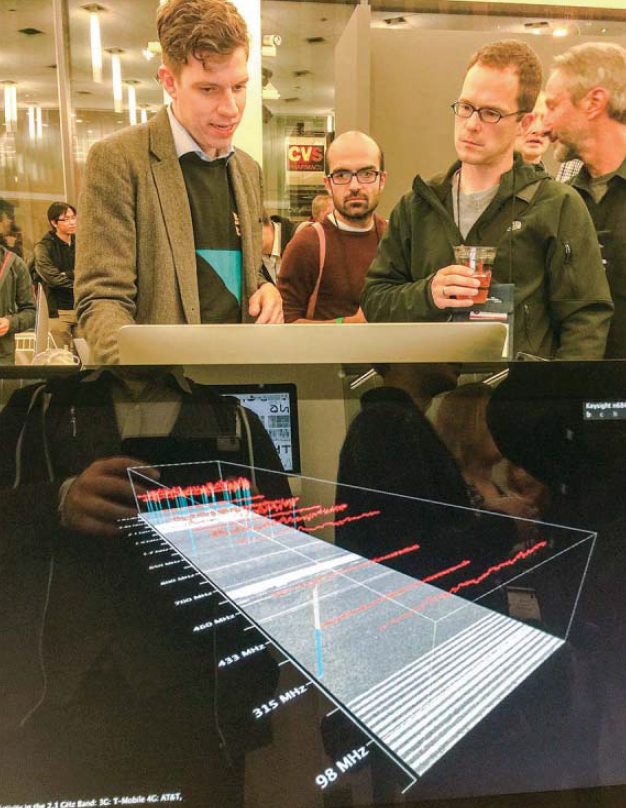Spectral Landscapes: Visualizing Electromagnetic Interactions
September 1st, 2016
Categories: Applications, Sound Art, Audio Research

Authors
Balogh, B., Camci, A., Murray, P., Forbes, A.G.About
Electromagnetic fields are formed through complex interactions between outer space, the Sun, our Earth, its atmosphere, and the built environment. Our communications technology makes use of them to enable the transmission of information at local, global, and even extraterrestrial scales. Mastery of electromagnetic fields made the information age possible, and the constant acceleration of innovation in communication technology continues to profoundly influence contemporary culture. Because wireless communication takes advantage of ranges of the electromagnetic spectrum that we are unable to sense physically, it is necessary to translate these signals into a domain that human beings can more readily perceive in order to understand them. Not only is it relevant to see the signals themselves (which is commonly done through instruments such as oscilloscopes or spectrum analyzers), it is also important to understand what kinds of information are being transmitted via these signals and the sociopolitical mechanisms that define and govern their use.
This article introduces a series of artworks that explore new creative opportunities made possible via low-cost sensors (which can be used to home in on a small region of the spectrurm within limited ranges) and state-of-the-art receivers (which are able to capture terabytes of spectrum data per second from great distances.
Citation
Balogh, B., Camci, A., Murray, P., Forbes, A.G., Spectral Landscapes: Visualizing Electromagnetic Interactions, IEEE Computer Graphics and Applications, September 1st, 2016.